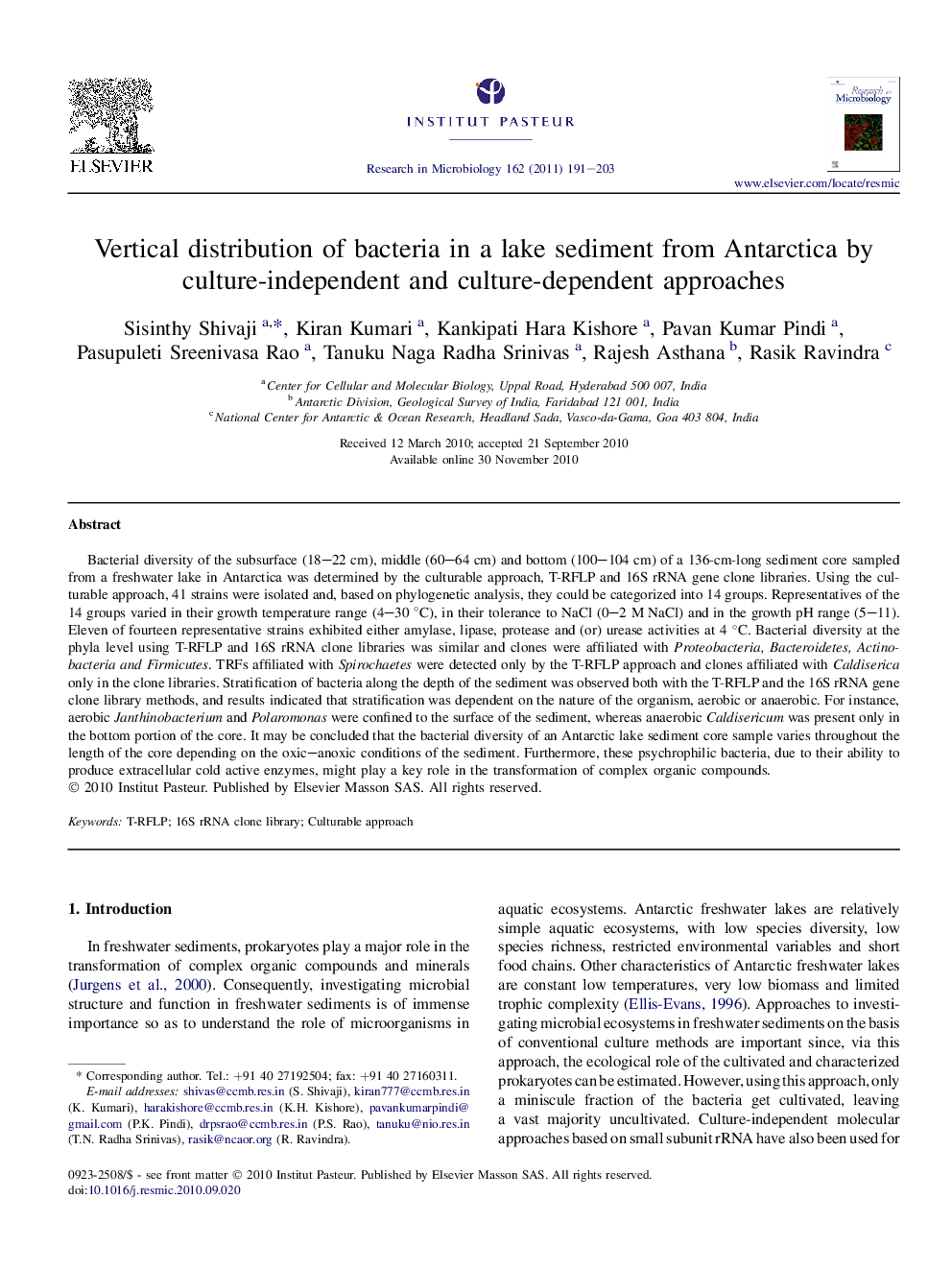| کد مقاله | کد نشریه | سال انتشار | مقاله انگلیسی | نسخه تمام متن |
|---|---|---|---|---|
| 6288188 | 1300484 | 2011 | 13 صفحه PDF | دانلود رایگان |
عنوان انگلیسی مقاله ISI
Vertical distribution of bacteria in a lake sediment from Antarctica by culture-independent and culture-dependent approaches
دانلود مقاله + سفارش ترجمه
دانلود مقاله ISI انگلیسی
رایگان برای ایرانیان
کلمات کلیدی
موضوعات مرتبط
علوم زیستی و بیوفناوری
ایمنی شناسی و میکروب شناسی
میکروبیولوژی و بیوتکنولوژی کاربردی
پیش نمایش صفحه اول مقاله

چکیده انگلیسی
Bacterial diversity of the subsurface (18-22 cm), middle (60-64 cm) and bottom (100-104 cm) of a 136-cm-long sediment core sampled from a freshwater lake in Antarctica was determined by the culturable approach, T-RFLP and 16S rRNA gene clone libraries. Using the culturable approach, 41 strains were isolated and, based on phylogenetic analysis, they could be categorized into 14 groups. Representatives of the 14 groups varied in their growth temperature range (4-30 °C), in their tolerance to NaCl (0-2 M NaCl) and in the growth pH range (5-11). Eleven of fourteen representative strains exhibited either amylase, lipase, protease and (or) urease activities at 4 °C. Bacterial diversity at the phyla level using T-RFLP and 16S rRNA clone libraries was similar and clones were affiliated with Proteobacteria, Bacteroidetes, Actinobacteria and Firmicutes. TRFs affiliated with Spirochaetes were detected only by the T-RFLP approach and clones affiliated with Caldiserica only in the clone libraries. Stratification of bacteria along the depth of the sediment was observed both with the T-RFLP and the 16S rRNA gene clone library methods, and results indicated that stratification was dependent on the nature of the organism, aerobic or anaerobic. For instance, aerobic Janthinobacterium and Polaromonas were confined to the surface of the sediment, whereas anaerobic Caldisericum was present only in the bottom portion of the core. It may be concluded that the bacterial diversity of an Antarctic lake sediment core sample varies throughout the length of the core depending on the oxic-anoxic conditions of the sediment. Furthermore, these psychrophilic bacteria, due to their ability to produce extracellular cold active enzymes, might play a key role in the transformation of complex organic compounds.
ناشر
Database: Elsevier - ScienceDirect (ساینس دایرکت)
Journal: Research in Microbiology - Volume 162, Issue 2, FebruaryâMarch 2011, Pages 191-203
Journal: Research in Microbiology - Volume 162, Issue 2, FebruaryâMarch 2011, Pages 191-203
نویسندگان
Sisinthy Shivaji, Kiran Kumari, Kankipati Hara Kishore, Pavan Kumar Pindi, Pasupuleti Sreenivasa Rao, Tanuku Naga Radha Srinivas, Rajesh Asthana, Rasik Ravindra,